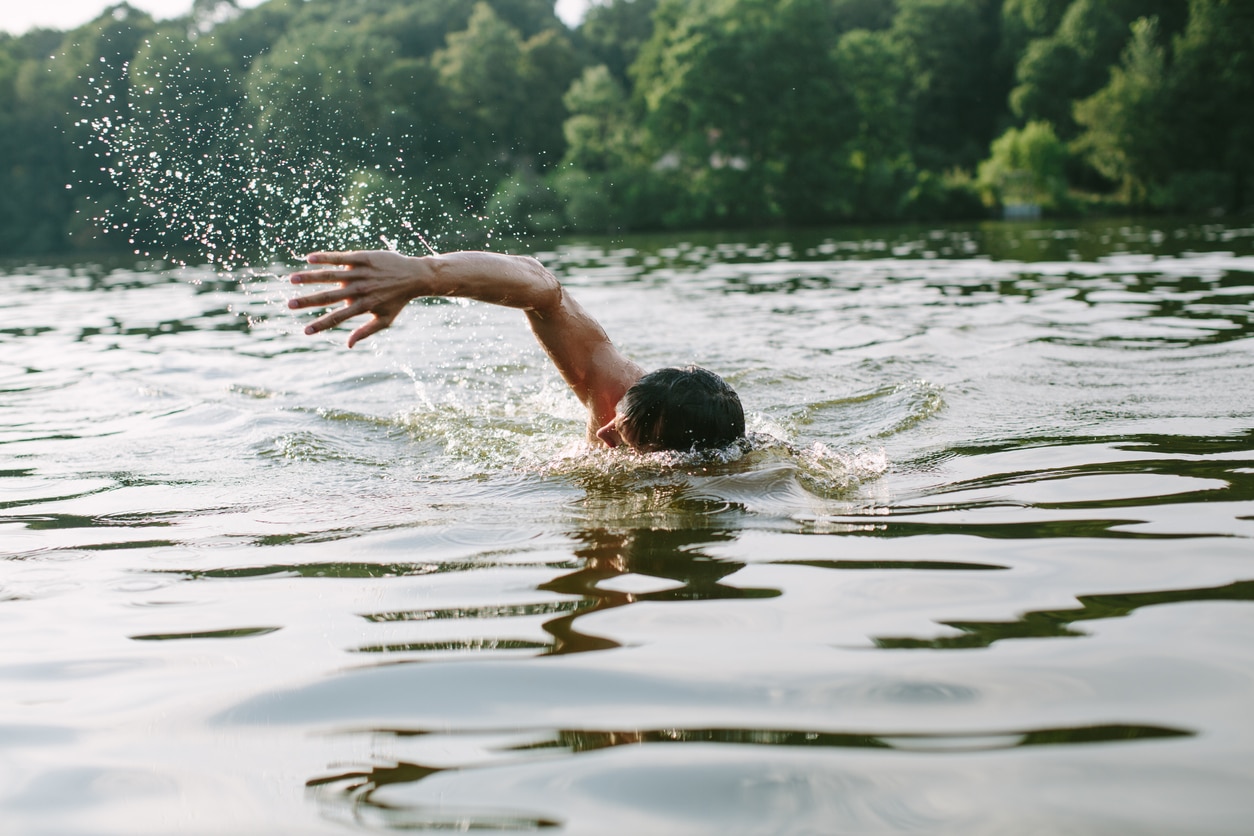Swimmer’s ear is an infection in the outer ear canal caused by water retention. When your ears retain water, they create the perfect host for bacteria growth and infection. Symptoms of mild swimmer’s ear include but are not limited to:
- Itching in the ear canal
- Redness in the ear
- Mild discomfort in the ear
- Feeling of fullness in the ear
- Muffled hearing
Though uncommon, severe cases of swimmer’s ear may include complete blockage of the ear canal, redness and swelling of the outer ear, lymph nodes in the neck, fever and severe pain radiating out of the ear.
Common risk factors for swimmer’s ear include excessive moisture in the canal from heavy sweat or humidity, exposure to swimming environments such as Hoogland Lake and ear devices such as earbuds or hearing aids. Let’s take a closer look at how your hearing aids may increase your likelihood of developing swimmer’s ear and what you can do to prevent it.
How Can Hearing Aids Increase the Risk of Swimmer’s Ear?

One possible cause for the increased risk of swimmer’s ear with hearing aids is the trapping of water in the ear canal. When you swim in a high-bacterial environment, you are introducing moisture and bacteria to the ear canal. If you are not thoroughly cleaning your ears after a swim, your hearing aids may trap bacteria and moisture in the canal and increase your risk of an ear infection.
Because swimmer’s ear can worsen over time, practicing good hygiene and preventative methods is essential.
Preventing Swimmer’s Ear
Hearing aids are remarkable devices that amplify speech sounds, suppress background noise, improve balance and manage tinnitus symptoms. They are a great tool in treating hearing loss and improving your ease of communication. Because of the devices’ many benefits, it is wise to follow good hygiene practices to prevent an infection from negatively impacting your hearing aid use. A couple of tips for preventing swimmer’s ear include:
- Dry your ears. After swimming, tilt your head to one side to help water drain from your ear canal and dry the outer ear with a soft towel. Return your hearing aids to your ears once they are fully dry. If you are prone to swimmer’s ear, try drying the ear canal with a blow dryer on the lowest setting, held at least a foot away from the ear.
- Wear earplugs. Wear earplugs during a swim to keep bacteria and water from entering the ear canal.
- Clean your devices. Adhere to cleaning practices detailed in your hearing aid manual to prevent bacteria from clinging to the surface of your devices.
For more information on caring for your ear health, contact Advanced Audiology & Hearing Aids today.
